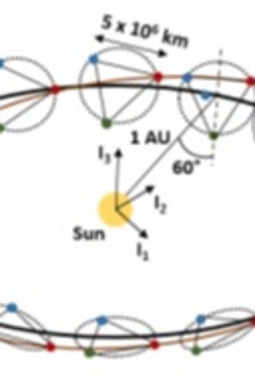Assessment and Preliminary Prototyping of a Drag Free Control System for the L3 Gravity Wave Observatory

The LISA (Laser Interferometer Space Antenna) mission is an ESA developing space mission with a launch date in 2034 and a duration of five years. The goal of the mission is to realize a space observatory complementary with two Earth observatories, Virgo and LIGO, in order to detect alternative sources of gravitational waves, such as binary star systems or merging of super-massive black holes, also exploiting the fact that disturbances and noises are lower in space than in the Earth environment. In this project, CNR-IEIIT has studied the first phase of this mission which relates to the release of the Test Masses (TMs), starting when the plungers, which firmly hold the TMs, are retracted and the cubic TMs must be controlled in a robust and precise way. In fact, TMs are used in the Spacecraft (S/C) system as space sensors, to detect low frequency signals from gravitational waves. The main goal of this phase is to stabilize and maintain the TMs in the center of their own cage to continue with the science operations. In this project CNR-IEIIT has developed advanced control algorithms for the TMs Release Phase, which ensure precise and robust control to effectively counteract the challenging disturbances of space environment and high uncertainties from on-board sensors as well as limits of actuation system.
PARTNERS & CNR-IEIIT ROLE
Partners: Thales Alenia Space Italy, CNR-IEIIT and Politecnico di Torino.
In the LISA mission Test Masses (TMs) are used as space sensors to detect low frequency signals from gravitational waves and CNR-IEIIT has developed innovative control algorithms for the TMs Release Phase.
OTHER INFORMATION
Funding: European Space Agency (ESA) under the General Support Technology Programme (GSTP) (ESA ITT AO/1-9100/17/NL/CRS)
Timeline: 2018-2020